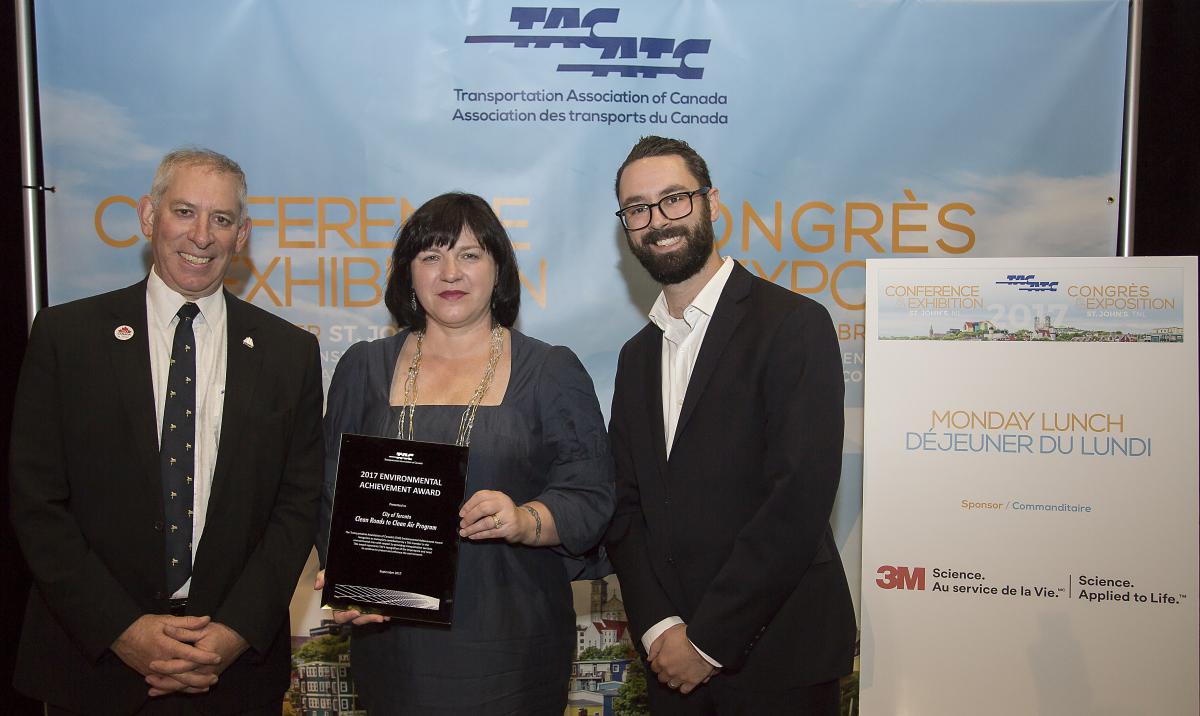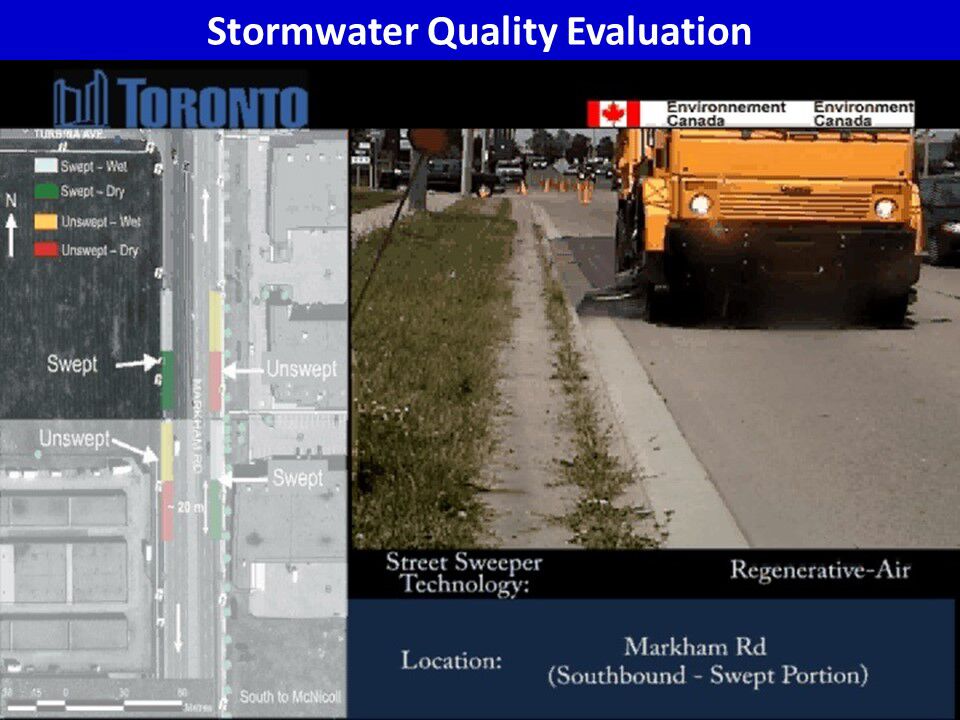The City of Toronto has won the 2017 Transportation Association of Canada (TAC) Environmental Achievement Award for its Clean Roads to Clean Air Program.
The award, which recognizes exemplary contributions to the protection and enhancement of the environment or a particularly original solution to an environmental problem, was presented at the TAC Conference Monday Lunch in St. John’s on September 25, 2017.

Winner of the TAC Environmental Achievement Award: Vesna Stevanovic-Briatico, City of Toronto (centre); Paul Lafleche, TAC President (left); Don Boccabella, 3M Canada (right).
Toronto’s Transportation Services Division developed the Clean Roads to Clean Air (CRCA) Program in 2005.
“The program helped develop procedures and standards to evaluate the operational and environmental performance levels of various sweeper technologies, and created a framework for continual assessment and improvement of sweeping practices,” explains Vesna Stevanovic-Briatico, Transportation Coordinator, Operational Planning and Policy, City of Toronto.

The CRCA Program defined a process that made it possible to obtain quantitative results of a street sweeper’s operational and environmental efficiency and provided the justification for acquiring environmentally efficient sweepers. This allowed the City to remove significant quantities of road dust and reduce the amount of airborne fine particulate matter from its roads year-round, by at least 21%.
A number of air quality monitoring and stormwater quality studies and tests were done to understand the at-nose level ambient air quality; the impact of street sweeping on particulate matter; silt loading found on roads in terms of quantity and quality; and the entrainment of dust during sweeping and passing vehicles.
Having environmentally efficient sweepers helps protect green infrastructure built within the right-of-way.
“This is achieved by minimizing the displacement of road dust to adjacent boulevards where you might have permeable and porous surfaces needing to be cleaned,” adds Vesna. “Natural waterways are also protected by removing fine road dust and silt loading from the surface of the road and not allowing it to enter the catch basins.”
A significant outcome of the program has been the development of two testing protocols which were adopted by the Environment Canada and Climate Change’s Environmental Technology Verification (ETV) Program.
Through the evaluation of a street sweeper’s environmental performance, Toronto has been able to:
The sweeper industry has responded positively to Toronto’s testing protocols and have used their results to further improve the performance of their equipment. The Canadian ETV Program, under the license agreement with Environment Canada has also adopted Toronto’s testing protocols and provided third-party verification certificates of environmental and operational performance for various sweeper technologies.
“Including ETV certificates would allow jurisdictions to buy and operate best-in-class sweepers that have the highest operational, PM removal and entrainment efficiency,” notes Vesna. “This would contribute to cleaner roads, improved air quality and establish a best practice for the industry.”
Five other submissions for the award were also evaluated by a selection committee appointed by TAC’s Environment Council: Conservation Dogs to Detect Blanding’s Turtle Nests prior to Road Rehabilitation Activities (McIntoshPerry); Creation of the Bonshaw Hills Provincial Park and Protection of Provincially Owned Land (Prince Edward Island Transportation, Infrastructure and Energy); Mitissini Wooden Bridge (Stantec Consulting Ltd.); Restoring Fish Passage to a Tributary of the Saugeen River (MTO); and Wildlife Detection Systems (British Columbia Transportation and Infrastructure).
A session based on the award featuring nominees will be held at the upcoming TAC Conference & Exhibition in September.